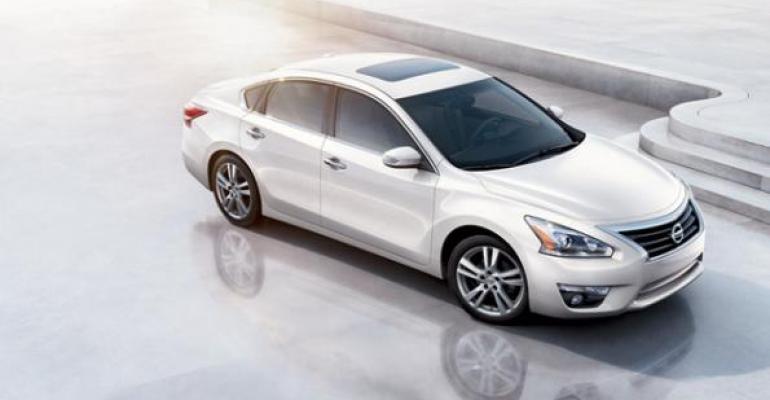NEW YORK – The debut of Hyundai’s Sonata midsize sedan caused a brief halt to design work on Nissan’s fifth-generation Altima, a top executive at the Japanese auto maker reveals.
“Clearly, we referenced the Sonata when we were going through the design process,” Andy Palmer, Nissan executive vice president-global planning, marketing and Infiniti Div., tells WardsAuto in an interview here.
“We even delayed development by a short amount just to check that the (new Altima’s) proportions were right, the (package) was right (and that) the product overall was right.”
The midsize-sedan segment is the most volume-heavy and competitive in the U.S. market, with 781,487 units sold in the year’s first quarter, up 26.1% from like-2011, according to WardsAuto data.
Nevertheless, Hyundai made U.S. car buyers and the industry take notice three years ago with the release of its latest, aggressively styled Sonata. “I’d say they are our major point of reference,” Palmer says.
Hyundai, as well as sister-brand Kia, at one time emulated more staid Japanese brands until both Korean auto makers embraced a less-restrained design language three years ago.
Palmer notes the Korean won is weaker than the Japanese yen with which Nissan is burdened, but he concedes pricing power can “by no means be used as an excuse – (Hyundai-Kia) also come with darn good product.”
Hyundai sold more than 200,000 Sonatas in the U.S. in 2011 for the first time in a calendar year, and the car was the No.7 best-selling ’12 model through March.
But the Sonata still is selling less than 300,000-plus units typically enjoyed by the conservatively styled Toyota Camry and Honda Accord.
Toppling the long-standing No.1 Camry is a goal for the new Altima, decreed by Nissan CEO Carlos Ghosn. For that reason, the Altima is not as aggressively styled as is the Sonata.
“It’s Camry that is in our sights, (and) the target market is, relatively speaking, conservative,” Palmer says. The American midsize sedan buyer is “clearly looking for a vehicle with elegance but not so showy.”
A “very, very luxurious” interior and Nissan’s typical great handling are hallmarks of the new Altima, he adds. “And the cherry on the cake is fantastic fuel economy.”
Nissan is estimating highway fuel economy of 38 mpg (6.4 L/100 km) in the 2.5L 4-cyl.-equipped ’13 Altima with a standard continuously variable transmission.
That puts the Altima ahead of the upcoming next-generation Ford Fusion, which Palmer praises for its design. But the Fusion will have an estimated fuel economy of 37 mpg (6.4 L/100 km) highway for non-hybrid variants.
The current Altima is the No.2 best-selling midsize car in the U.S. With the features and specifications of the upcoming model, Palmer maintains the new “Altima is the car to beat.
“(The Altima) was always a bridesmaid to the Accord,” he adds. “It’s not any more. Now, as Carlos Ghosn said: Can we beat Camry?”
The success of the current Altima and expected sales of the new model should help Nissan raise brand its perception in the U.S., the only global market where it remains the No.3-selling Japanese auto maker, behind Honda and No.1 Toyota.
“You’re not going to change a 20-year public perception overnight,” Palmer says. “(The new Altima’s) good enough, that’s clear. Now the question is (whether) the marketing (is) good enough. That’s my responsibility.
“If you keep coming with better cars and better communications, telling better stories, over a period of time, I guarantee you’ll be talking about Toyota and Nissan.”





